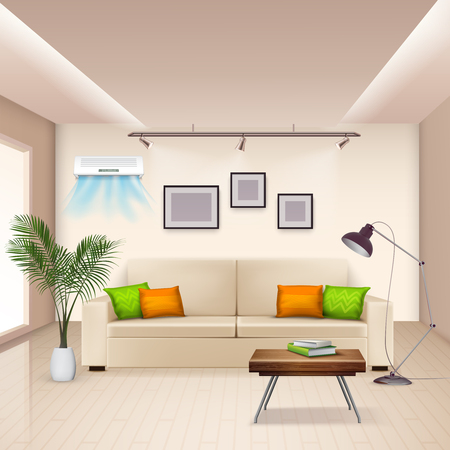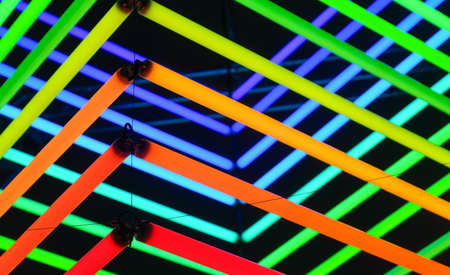Introduction to Lighting in Interior Design
In the world of American interior design, lighting isn’t just an afterthought—it’s a fundamental element that shapes how we experience and interact with our spaces. Whether you’re stepping into a cozy living room or a dynamic open-plan office, the type and quality of lighting can dramatically influence both the appearance of colors and the mood within the environment. For homeowners and business owners alike, understanding how lighting works is a practical step toward creating interiors that not only look great but also support well-being and productivity. In American homes, lighting decisions impact everything from daily routines to the way guests perceive your décor. In the workplace, smart lighting choices can foster creativity, reduce stress, and even enhance focus. This article explores why thoughtful lighting design is essential for achieving optimal color perception and mood, setting the foundation for spaces that truly work for their occupants.
2. Types of Lighting and Their Roles
Understanding the different types of lighting is essential for anyone looking to optimize color perception and influence mood in interior spaces. In the U.S., homes and commercial spaces typically use a combination of three main lighting categories: ambient, task, and accent lighting. Each serves a unique purpose and can dramatically affect how colors appear as well as the overall atmosphere.
Ambient Lighting
Ambient lighting is the general illumination that fills a room, providing an even level of light throughout the space. It’s often referred to as “background” lighting. In American homes, this usually comes from ceiling-mounted fixtures such as recessed lights or chandeliers in living rooms and flush-mount fixtures in bedrooms. In commercial settings like offices, it might be achieved with grid ceiling panels or LED troffers. Ambient lighting sets the foundation for color perception; if it’s too dim or too harsh, paint colors and furniture fabrics may look completely different than expected.
Task Lighting
Task lighting focuses on specific areas where activities like reading, cooking, or working take place. For example, under-cabinet LED strips are common in American kitchens to provide direct light on countertops, making food preparation safer and more efficient. In home offices, adjustable desk lamps help reduce eye strain by offering targeted illumination for work tasks. Retail stores often use track lighting aimed at checkout counters or display tables so employees and customers can see products clearly.
Accent Lighting
Accent lighting is used to highlight architectural features, artwork, or decorative elements. In U.S. living rooms, wall sconces might be installed to spotlight family photos or textured walls. Museums use directed spotlights to draw attention to specific exhibits without overwhelming the space with brightness. Accent lighting adds dimension and drama—subtly shifting how colors are perceived and enhancing visual interest.
Lighting Types by Room: Real-World U.S. Examples
| Room/Space | Ambient Lighting | Task Lighting | Accent Lighting |
|---|---|---|---|
| Living Room | Ceiling fan with light kit | Floor lamp near reading chair | Sconces highlighting art |
| Kitchen | Recessed ceiling lights | Under-cabinet LEDs over counters | Pendant lights over island |
| Office (Home/Commercial) | LED panel ceiling fixtures | Adjustable desk lamp | Picture lights above diplomas/artwork |
| Retail Store | Overhead grid fluorescent lights | Track lights at checkout area | Spotlights on featured displays |
| Museum Gallery | Dimmable overhead cans | Lamps for exhibit labeling stations | Museum-grade spotlights on art pieces |
The Takeaway: Strategic Use of Lighting Maximizes Impact
Selecting the right mix of ambient, task, and accent lighting isn’t just about visibility—it’s about controlling how people experience color and feel within a space. By understanding these roles and using them strategically in each room or commercial environment, you can create atmospheres that boost productivity, comfort, and even sales.

3. How Lighting Affects Color Perception
Lighting is one of the most powerful tools for transforming how colors appear in any interior space, and the type of light you choose can make or break your design. Let’s break down how daylight, LEDs, and traditional bulbs can each impact color perception with everyday American scenarios.
Daylight: The Gold Standard
Natural daylight is what designers dream of. It brings out the truest hues in paint, furniture, and decor. Think about a living room with large windows: those crisp blue-grays look cool and modern during the day, but when the sun starts to set, everything warms up. Daylight enhances vibrancy, but it also shifts throughout the day, so that perfect “morning gray” sofa might turn a little beige by evening. In an open-plan office, big windows mean your branding colors on the walls pop and energize staff—until a cloudy afternoon dims everything.
LEDs: Versatile But Tricky
LED lighting is everywhere in American homes and workplaces because it’s energy-efficient and customizable. However, not all LEDs are created equal. Cool white LEDs tend to make blues and greens stand out, which works well in a home office where you want to feel sharp and focused. On the flip side, warm white LEDs soften reds and yellows—a cozy effect for family rooms or bedrooms. Smart LEDs take it further: you can shift from energizing daylight tones for productivity to soft amber for movie nights with just a voice command.
Traditional Bulbs: Warmth With Character
The classic incandescent bulb gives off a warm glow that flatters skin tones and makes reds, oranges, and browns feel richer. Picture an American dining room lit by traditional bulbs during Thanksgiving dinner—everything feels inviting and deliciously golden. But these bulbs can mute cooler colors like blues or greens, making them look duller than they do in natural light.
Real-World Takeaway
If you’re investing in new paint or furnishings, always test samples under different lighting at home or in the office—not just at the store. The right lighting can elevate your investment by ensuring your chosen colors look their best 24/7. Ultimately, understanding how lighting affects color perception helps you create spaces that not only look good but also support the mood and productivity you want to achieve.
Lighting’s Impact on Mood and Well-being
In the context of American lifestyles, lighting doesn’t just serve a practical purpose—it has a direct influence on our emotional state and overall wellness. Many homeowners and interior designers now prioritize lighting design as part of holistic well-being, inspired by trends like biophilic design and wellness-focused living spaces.
The Psychology Behind Lighting Choices
Different types of lighting trigger varied psychological responses. For example, warm white lights (2700K–3000K) are typically associated with comfort and relaxation, making them popular in bedrooms and living rooms across the U.S. On the other hand, cooler lights (4000K–5000K) are often used in offices or kitchens to promote alertness and focus—aligning with productivity-driven American work-from-home culture.
Emotional Impact Table: Common Lighting Types
| Lighting Type | Color Temperature (Kelvin) | Mood Effect | Popular American Use Case |
|---|---|---|---|
| Warm White | 2700K–3000K | Cozy, Relaxing | Living Rooms, Bedrooms |
| Neutral White | 3500K–4100K | Balanced, Inviting | Dining Areas, Retail Spaces |
| Cool White/Daylight | 5000K–6500K | Energizing, Focused | Kitchens, Home Offices, Garages |
Mood-Boosting Lighting Trends in the U.S.
Modern American homes increasingly feature adjustable lighting systems—like dimmable LEDs and smart bulbs—that allow users to tailor brightness and color temperature throughout the day. This aligns with wellness trends such as circadian lighting, which mimics natural daylight cycles to support better sleep and mood regulation. Studies show that proper lighting can reduce stress and enhance feelings of happiness—an investment that pays off not just in comfort but also in improved mental health.
Key Takeaway for Homeowners:
If you want to boost your mood and well-being at home, prioritize flexible lighting solutions that let you adjust for both activity and relaxation. Consider how each space is used throughout the day—and invest in lighting that supports your lifestyle for maximum return on comfort and productivity.
5. Practical Tips for Homeowners and Designers
Choose the Right Bulb Type for Your Space
When it comes to optimizing lighting for both color accuracy and mood, start by selecting the right bulb type. For living rooms and bedrooms, warm white LED bulbs (2700K–3000K) create a cozy, inviting atmosphere. For kitchens or workspaces where true color matters, daylight LEDs (5000K–6500K) are ideal to ensure you see colors accurately, which is especially important when preparing food or matching décor items.
Layer Your Lighting
Don’t rely on just one overhead fixture. Combine ambient lighting (ceiling lights), task lighting (desk lamps, under-cabinet strips), and accent lighting (wall sconces, spotlights) to create depth and flexibility in your interiors. This approach allows you to adjust the mood and color perception throughout the day or based on activities.
Invest in Dimmable Fixtures
Install dimmer switches or use smart bulbs with adjustable brightness to control intensity. Lower light levels enhance relaxation and warmth, while higher levels support productivity and accurate color rendering. Products like Lutron Caseta dimmers or Philips Hue smart bulbs offer user-friendly solutions popular among American homeowners.
Pay Attention to CRI Ratings
The Color Rendering Index (CRI) measures how well a light source shows colors compared to natural sunlight. Look for bulbs with a CRI of 90+ when you want the truest color representation—especially important for art studios, closets, or anywhere color distinction matters.
Use Window Treatments Strategically
Natural daylight dramatically influences both mood and color perception. Maximize it with sheer curtains or blinds that diffuse harsh sunlight but still let in plenty of light. In spaces with limited windows, consider adding mirrors to reflect more daylight around the room.
Keep Up with Maintenance
Dusty bulbs and fixtures can dull your lighting’s impact. Regularly clean your light sources to maintain optimal brightness and color fidelity—an easy win for both mood and investment value.
Smart Solutions for Modern Homes
For ultimate convenience, try integrating smart home systems like Google Nest or Amazon Alexa-compatible devices. These allow you to automate lighting scenes according to time of day or activity, maximizing both comfort and energy savings—a smart move for boosting home appeal and future resale value in the U.S. market.
6. Maximizing Value: Investment Benefits of Smart Lighting
Boosting Property Value Through Lighting Innovation
Smart lighting design isn’t just about aesthetics; it’s a strategic investment that can significantly increase the value of your property. In competitive American real estate markets, homes with thoughtfully designed lighting systems—especially those that incorporate smart controls and energy-efficient fixtures—stand out. Prospective buyers increasingly look for modern conveniences, and homes equipped with customizable lighting solutions are perceived as more up-to-date, comfortable, and energy-conscious. This translates directly into higher resale values and greater market appeal.
Energy Savings That Pay Off
Switching to smart lighting isn’t just good for the environment; it’s great for your wallet too. With features like motion sensors, automated dimming, and scheduling, American households can drastically reduce their monthly utility bills. LED technologies consume a fraction of the electricity compared to traditional bulbs, while app-controlled lighting ensures you never leave lights on unnecessarily. Over time, these energy savings compound, providing a clear return on investment and making smart lighting upgrades a financially savvy decision.
Personal Comfort and Well-Being
The benefits of smart lighting go beyond dollars—they enhance daily living. By tailoring lighting temperature and intensity to different times of day or activities, you can create environments that support relaxation, productivity, or entertainment. For example, warmer tones foster coziness in living rooms during the evening, while cooler white light in home offices boosts focus and alertness. Smart systems allow for easy adjustments through voice commands or smartphone apps, ensuring every family member enjoys optimal comfort tailored to their needs.
A Competitive Edge for the Modern American Home
In summary, investing in proper lighting design is a win-win: it elevates color perception and mood within your interiors while delivering tangible financial rewards. Whether you’re looking to enjoy immediate energy savings, increase your home’s value for future resale, or simply upgrade your living experience, smart lighting is an essential component for American households seeking both comfort and long-term return on investment.


